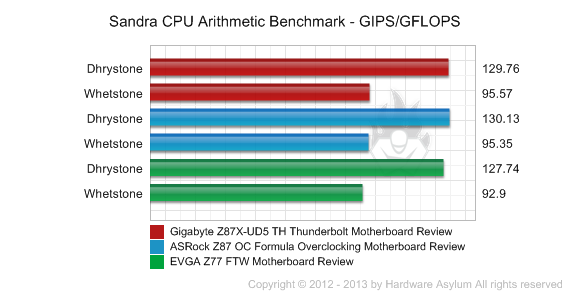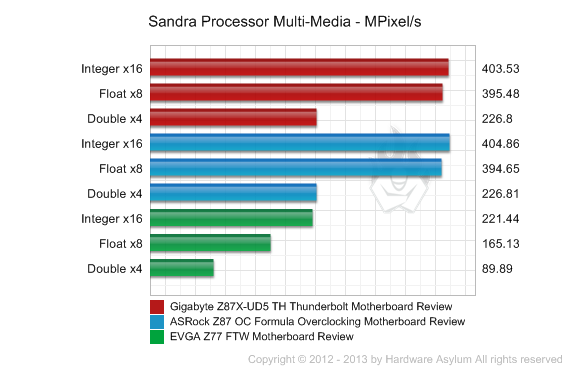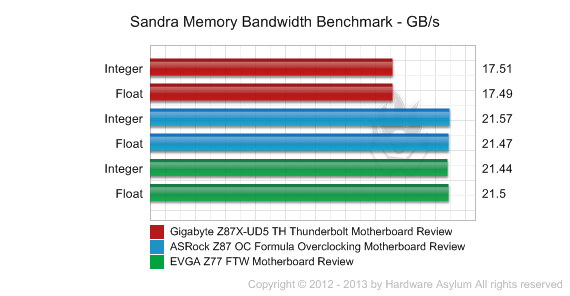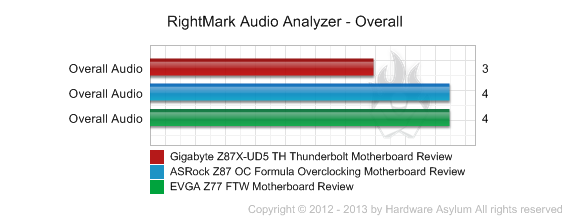Gigabyte Z87X-UD5 TH Thunderbolt Motherboard Review
Author: Dennis GarciaBenchmarks - Synthetic
Sandra is a software collection of synthetic benchmarks that will give us a basic idea as to what a system is capable of. It should be noted that SiSoft numbers change depending on what hardware is being tested. These were recorded using Sandra Professional Version 19.35.2013.4



One of the most difficult things about doing reviews is finding some kind of common ground to establish a benchmark on so that when we say something is good our readers know it is based on something they can try themselves. In the case of audio reproduction there are too many factors to consider such as hearing quality, sound equipment (speakers) and room dimensions so we are turning to the RightMark Audio Analyzer to give us a set of audio specs. We will then use those numbers to determine what kind of audio quality you can expect.
This test was performed using a loopback cable which is basically a jack that connects the analog line-out plug back into the analog line-in. That way we can remove almost all of the variables and concentrate on what is actually being reproduced and recorded.
Specs
Frequency response (from 40 Hz to 15 kHz), dB: +0.19, -0.17
Noise level, dB (A): -90.7
Dynamic range, dB (A): 90.8
THD, %: 0.187
THD + Noise, dB (A): -50.1
IMD + Noise, %: 0.301
Stereo crosstalk, dB:-89.0
IMD at 10 kHz, %: 0.273
General performance Good
Color coding indicates good to bad, Bright green = Excellent - Bright Red = Poor - Black = Good

Synthetic performance never really tells the entire story, but is a good indication of what the system would probably be capable of doing under the right conditions. Due to some enhancements in the memory controller and onboard cache you will find that the CPU itself isn't much faster than an Ivy Bridge but will process memory intensive data much faster.
The Rightmark audio benchmark is a great tool for exposing audio specs for the various chips and software used and read much like if you were buying an amplifier or sound system for your house. What you can take away from this is that the sound quality is "good" for an onboard audio solution. We did color code some of the other numbers to give you an indication as to what each of the numbers mean.
Of course when you do motherboard testing long enough you begin to notice some things. For instance we wanted to use Corsair Dominator PC2133 memory in this review which brought with it a slightly different timing curve. We attribute that to the lower default memory scores. Likewise we have noticed that the default audio drivers that Gigabyte includes doesn't have a matching bitrate for the line in and line out. Because of this the benchmark result from Rightmark is lower than the reference systems.

